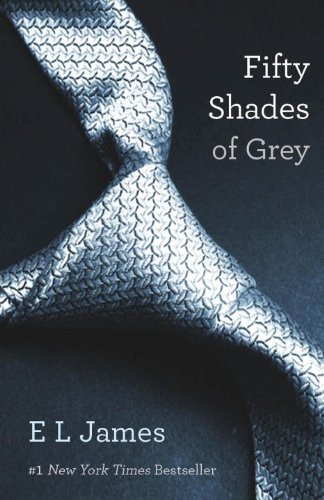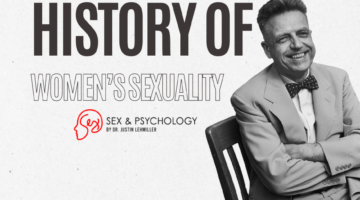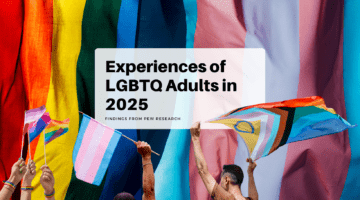Why Is “Fifty Shades of Grey” So Popular? Do Women Really Prefer Erotic Fiction To Hardcore Porn?
June 6, 2012 by Justin Lehmiller
“Research has shown that men are more visually stimulated, while women are more literary; they’re turned on by words or erotic stories.” – Dr. Michael Krychman on Fifty Shades of Grey
I have seen variations of the above quote appear in many news articles and Human Sexuality textbooks as a basic “fact” about female sexuality. There seems to be a widely shared belief among both scholars and the general public that explicit visual depictions of sex are far less appealing to women than they are to men, and that women will choose a steamy romance novel of questionable literary value over a graphic porn video any day. In fact, many people believe this is one of the primary reasons why books like Fifty Shades of Grey attract so many female readers. However, I’m not fully convinced by this argument. My reading of the scientific literature on sexual arousal suggests another possibility: perhaps women gravitate toward these books not because they are less aroused by hardcore pornography, but because society tells women that they’re not supposed to enjoy more explicit sexual materials.
On the surface, the argument that women are less visually aroused than men would appear to carry some weight. For example, research has found that men consume far more Internet porn than women [1]. Additionally, in studies where men and women are exposed to different types of pornography and are asked to report how sexually aroused they feel , men consistently report higher levels of arousal than do women [2]. However, if we dig a little deeper into the research, the picture becomes less clear.
For example, in an experiment where male and female participants watched pornography and sexual arousal was assessed with biological measures (i.e., penile strain gauges and vaginal photoplesythmographs, which record the amount of blood flowing to the genitals) rather than psychological self-reports, the sex difference in arousal disappeared [3]. In fact, heterosexual men and women showed equally strong genital arousal when watching straight pornography in this study! One other fascinating finding from this research is that heterosexual women showed almost equally strong genital arousal to all of the porn they were exposed to, regardless of whether it featured heterosexuals, gay men, or lesbians. In contrast, heterosexual men only showed strong genital arousal to porn featuring women in some way. Such findings tell us that women are more sexually responsive to visual stimuli than we have been led to believe and that women may actually be turned on by a wider range of porn than men!
So how do we explain this disconnect between women’s biological and psychological responses to porn? No one can say for sure, but one possibility is that there is social pressure on women to say that they’re less aroused by pornography than they really are. This reasoning makes sense because society has long been unaccepting of women who like sex and are free with their sexuality. Such pressure may not only lead women to report lower levels of sexual arousal than they really feel, but also to consume less porn in general. Of course, it could also be the case that women consume less porn because most pornography is made by and for men, which means that there may not be as many hardcore materials out there that women want to watch.
Thus, the popularity of romance novels, Fifty Shades, and other types of erotic fiction among women may not be due to women’s greater affinity for “literary stimulation” over other forms of porn, but rather because such books are relatively tame and are therefore more acceptable for women to consume by societal standards. Until we have more definitive evidence, there is reason to be skeptical of the frequent claim that women just aren’t as visually stimulated as men.
Want to learn more about Sex and Psychology? Click here for previous articles or follow the blog on Facebook (facebook.com/psychologyofsex), Twitter (@JustinLehmiller), or Reddit (reddit.com/r/psychologyofsex) to receive updates.
[1] Boies, S. C. (2002). University students’ uses of and reactions to online sexual information and entertainment: Links to online and offline sexual behaviour. Canadian Journal of Human Sexuality, 11, 77-89.
[2] Koukounas, E., & McCabe, M. (1997). Sexual and emotional variables influencing sexual response to erotica. Behaviour Research and Therapy, 35, 221-230.
[3] Chivers, M. L., Rieger, G., Latty, E., & Bailey, J. M. (2004). A sex difference in the specificity of sexual arousal. Psychological Science, 15, 736-744.
Image Source: Amazon.com
You Might Also Like:

Dr. Justin Lehmiller
Founder & Owner of Sex and PsychologyDr. Justin Lehmiller is a social psychologist and Research Fellow at The Kinsey Institute. He runs the Sex and Psychology blog and podcast and is author of the popular book Tell Me What You Want. Dr. Lehmiller is an award-winning educator, and a prolific researcher who has published more than 50 academic works.
Read full bio >


